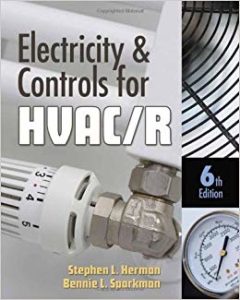Electricity and Controls for HVAC/R
Electricity and Controls for HVAC/R
Electricity and Controls for HVAC/R written with the assumption that the student has no prior knowledge of electricity or control systems. Basic electrical theory is presented in a practical, straightforward manner. Mathematical explanations are used only when necessary to explain certain concepts of electricity. Each unit starts with the objectives of the
unit and ends with a summary of important facts.
The text begins with the study of basic electrical theory and progresses to series circuits, parallel circuits, alternating current, inductive circuits, and capacitive circuits. The text also includes information on different types of three phase services found in industrial and commercial locations as well as single-phase residential services. Individual devices and components common to the air conditioning, heating, and refrigeration field presented in a practical manner.
You can also Read Control Systems for Heating, Ventilating and Air Conditioning, 6th Edition
Devices are explained from a standpoint of how they operate and how they are used. The text contains testing procedures for many of the devices covered. The practical presentation of these devices makes this text a must-have reference book for the service technician working in the field.
Electricity and Controls for HVAC/R Content
- PREFACE
![Electricity and Controls for HVAC/R]()
- Basic Electricity
- Control Circuits
- Motors
- Transformers
- Control Components
- Troubleshooting Using Control Schematics
- Ice Maker And Refrigeration Controls
- Solid-State Devices
- Solid-State Controls
- GLOSSARY
- INDEX
To understand electricity, one should start with the study of atoms. The atom is the basic building block of the universe. An atom is the smallest part of any element. Atoms composed of three principal parts, the electron, the proton, and the neutron. Electrons exhibit a negative charge, protons exhibit a positive charge, and neutrons have no charge. Some theories suggest that neutrons composed of both a proton and an electron. The positive charge of the proton and the negative charge of the electron cancel each other. Protons and neutrons are extremely massive.


Comments are closed.